PRESERVING A MILITARY LEGACY FOR FUTURE GENERATIONS
The following Reflections represents QM1 Robert Grant’s legacy of his military service from 1978 to 1999. If you are a Veteran, consider preserving a record of your own military service, including your memories and photographs, on Togetherweserved.com (TWS), the leading archive of living military history. The following Service Reflections is an easy-to-complete self-interview, located on your TWS Military Service Page, which enables you to remember key people and events from your military service and the impact they made on your life. Start recording your own Military Memories HERE.
Please describe who or what influenced your decision to join the Coast Guard?
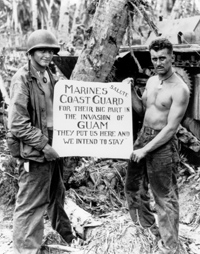
In 1977 I was 19 when we returned home from Australia; my father was an SMSgt assigned to the US Embassy in Canberra and stationed at the RAAF Base in Richmond, New South Wales. I entered Solano Community College, living at home, going to classes full-time and working a midnight to six shift. After a year and a half, I was growing disenchanted with my life. I got off early one morning (about 4 AM in early December 1978) returned home and could not sleep. I turned on the TV and there was a thirty minute (public service) advertisement for the USCG (it was now about 5 AM). I became enthralled as I watched it, 2/3 of the way through the topic changed and focused on at sea drug interdiction in the Caribbean Sea – the narrator described this as “The Coast Guard Goes To War.”
I immediately knew that this is what I wanted to be a part of. I looked up recruiting in the Yellow Pages – found a phone number and called it at 8:15 AM. The person who answered the phone said ‘Seaman _” – I thought I had dialed a wrong number – I was calling the Coast Guard not someone named Seaman and I hung up. Several minutes later I remembered the public service announcement that I had been watching said that upon graduation from basic training – that new recruits were Seamen. I called the number again and spoke with TTC Loy C. Forshee; I scheduled an appointment to take the ASVAB the next Saturday at the recruiting station in Santa Rosa, CA. I scored so well on the exam that I was offered a choice of guaranteed schools and selected Quartermaster School.
I entered the delayed enlistment program (DEP) on December 15, 1978, and arrived at USCG TRACEN Alameda on Jan. 23, 1979.
Whether you were in the service for several years or as a career, please describe the direction or path you took. What was your reason for leaving?

After completion of basic training at TRACEN Alameda, I was assigned to the USN Training Center in Orlando, FL for ‘SM “A” and QM “A” Schools.’ After graduation, I was assigned to the USCGC Sagebrush (WLB-399) home-ported in San Juan, PR.
In 1981 I was assigned to VTS Seattle, the position encompassed radar surveillance, being a ship-rider on foreign and U.S. flagged cargo vessels, tankers, tugs, U.S. and Canadian Warships. I served on detached duty at the Canadian VTS centers in Vancouver B.C. and Tofino (Vancouver Island).
September 1984 assigned to USCG Point Camden (WPB-82373) at Los Angeles/Long Beach, CA. Completed both USCG Boarding Officer School and National Search and Rescue School at RESTRACEN Yorktown, VA and EMT School at USCG TRACEN Petaluma, CA.
April 1986 I was assigned to USCGC Firebush (WLB-393), Kodiak, AK. Completed Aids to Navigation School and Advanced Boarding Officer School at RESTRACEN Yorktown, VA. Detached duty for five days at the NOAA office Anchorage, AK for advanced nautical chart and navigation training.
In 1988 I returned to VTS Seattle, radar surveillance, ship-rider on foreign and U.S. flagged cargo vessels, tankers, tugs, U.S. and Canadian Warships. Served on detached duty at the Canadian VTS centers in Vancouver B.C. and Tofino (Vancouver Island). I was assigned as the assistant training Petty Officer under RDC Tom Esford for VTS Seattle for two years until transferred. Attended and completed the Senior Petty Officer Leadership and Management School (SPOLAM) at TRACEN Petaluma, CA.
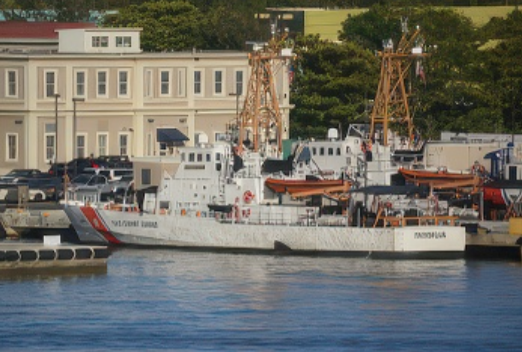
In July 1992 I was assigned to USCG Matinicus (WPB-1315) at Cape May, N.J. Completed the two-week law enforcement course at the Federal Law Enforcement Glynco, GA and the two-week fisheries enforcement course at the USCG NE Regional Fisheries Training Center, Otis ANGB, MA. I was certified by both NOAA and the State of Massachusetts as a fisheries enforcement officer.
August 1994 I was assigned to USCG Group Grand Haven, MI. I completed National Search and Rescue School and was designated the Group Senior SAR Controller. Trained Small Boat Stations under the OPCON of Group Grand Haven in SAR, lake currents, weather, and navigation. I developed professional working relationships with NOAA (Great Lakes – data buoy support office) and the National Park Service ‘Sleeping Bear’ maritime vessel office to share Search and Rescue (SAR) resources on Lake Michigan. While assigned I was a volunteer docent at the local Grand Haven (Coast Guard City USA) museum in its maritime exhibit section.
Retired in Feb 1999.
If you participated in any military operations, including combat, humanitarian and peacekeeping operations, please describe those which made a lasting impact on you and, if life-changing, in what way?
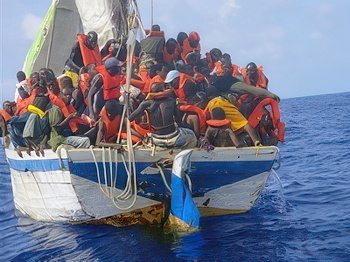
Operation ABLE MANNER aboard the USCGC Matinicus (WPB-1315) involved patrolling the Golfe de la Gonve and the north and south coasts of Haiti to conduct migrant interdiction operations.
Looking into the eyes of the people on the boats that could barely float that was boarded or that we came alongside took an emotional toll on me that I live with to this day.
Of all your duty stations or assignments, which one do you have fondest memories of and why? Which was your least favorite?
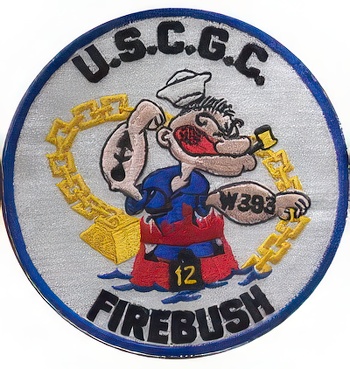
Fondest memory: USCGC Firebush (WLB-393), Kodiak, Alaska.
Least favorite: USCGC Matinicus (WPB-1315), Cape May, NJ.
From your entire military service, describe any memories you still reflect back on to this day.

The prosecution of Search and Rescue cases were the most rewarding as each called upon me as a USCG QM to fulfill the US Coast Guard’s over-arching motto of duty, honor, professionalism, and caring for others to guide the successful rescue of those in distress.
The one SAR case where I was the SAR Controller and was not successful continues to live within me. Every day, it holds me in reviewing my duty, honor, professionalism, personal responsibility and caring for others as the paramount guide to get through my day.
Of all the medals, awards, formal presentations and qualification badges you received, or other memorabilia, which one is the most meaningful to you and why?
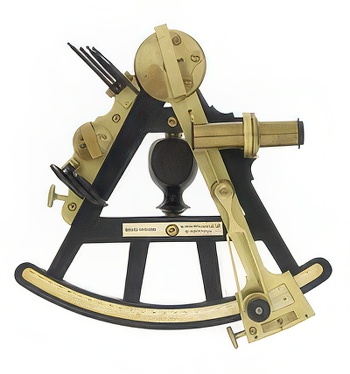
Being awarded Sailor of the Quarter aboard the USCGC Firebush in Kodiak, Alaska.
I was a QM2 when I reported aboard (the previous QM1 had been transferred approximately a month before) after several days I concluded that the three QM3’s had not been provided with professional guidance or held directly accountable for assigned tasks. All of their ‘guidance’ was written in a standard ‘Green notebook’ which was primarily a book of negative comments and faults about each QM3.
I saw this as an immediate opportunity to develop them into professionals for our ship and the Coast Guard. Each was assigned to create and maintain a ‘Sail Plan’ for specific areas within our AOR and to then provide a tailored navigation briefing to all the QM’s upon completion. Each was also assigned to create and present a forty-five-minute navigation topic (from Bowditch) – use of the sextant became the favorite – with a fifteen minute Q & A at the end.
With four of us in the U/W rotation, I dogged the four to eight watch in order to increase contact with all U/W watch personnel.
Each QM3 rotated through each position for the navigation piloting detail, which was difficult at times (based on their limited and lack of experience), but the end result was that each became more confident in their abilities, their knowledge base and a fuller understanding of how ‘the nav-plot’ depended on the abilities of each member of the piloting detail.
While at anchor, the training continued with ensuring each QM went ashore with the work parties to ‘experience’ the shoreline topography displayed on the nautical chart(s) and to locate and mark benchmarks used as baseline reference points we utilized to position nun’s, can’s, 8/36’s & 9/38’s (buoys).
This training was established to develop the professional potential of these individuals and to enhance both their knowledge base and their ‘local knowledge’ base and to instill a level of pride. I did this for these three QM’s and our ship, the meaningful result was being recognized by the Command and the Chiefs for simply doing what I viewed as the requirement of the position I held.
Which individual(s) from your time in the military stand out as having the most positive impact on you and why?
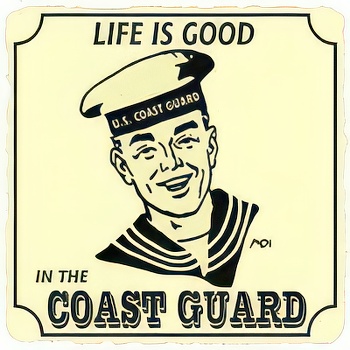
USCGC Firebush: CDR Charles Farnsworth, LT. Scott Krames, Ens. Will Ellis, Ens. Kathy Flood (Haines).
USCG Group Grand Haven: CDR James Bjostad
USCG Puget Sound Vessel Traffic Service: CDR Michael Hauke
These individuals were professionals in the truest sense and they cared about ‘the mission’ and ‘their crew.’
Can you recount a particular incident from your service which may or may not have been funny at the time but still makes you laugh?

While stationed aboard the USCGC Point Camden (WPB-82373) I was assigned to and completed the EMT School at USCG TRACEN Petaluma, CA. Several months after my return we were underway off Santa Catalina Island – suddenly over the radio came a call from a dive-vessel to the USCG requesting medical assistance. We responded immediately, while we were en route, the dive-vessel relayed that one of their passengers had fallen and sustained a complex fracture and needed immediate medical assistance.
We arrived on-scene within 10 minutes and launched our RHI with the BM3 and myself. The BM3 interviewed the captain, crew and passengers while I attended to the woman’s injury – it was a extensive injury and the EMT training took over. The BM3 relayed that the dive-vessel had been returning from three days of scuba-diving and the passengers had been drinking heavily – the woman included. The BM3 relayed that her boyfriend had confirmed this and that he had directed the dive-boat captain to collect and stow all the alcohol and start brewing coffee and tea for the passengers. I told him to call the Point Camden and request an air medical evacuation from USCG AIRSTA LA through Group LA/LB and I completed the ‘EMT Injury Form’ after bandaging and immobilizing the injury. The Point Camden confirmed the medevac and that a CG helo was en route. The BM3, a crew member from the dive-vessel and I placed the woman onto several more blankets on the after-deck. The boyfriend had gathered her purse and sat beside her, within several minutes the helo was over-head.
I passed an update on the patient’s condition to the pilot and requested that the boyfriend be allowed to be transported also which was affirmed. The BM3 hooked up the deadman’s stick and the helo lowered the stokes litter, the static electricity discharged and the BM3 unhooked the litter. We counted to three and placed the woman into the litter, covered her with the blankets and she suddenly reached up and grabbed my shirt-collar and pulled me toward her, she yelled over the down-draft ‘who is paying for this!!!!!’ I smiled and said – ‘the Coast Guard, these are your tax dollars at work.’
I signaled the BM3, the line was lowered and he hooked the litter up and I gave him the ‘go’ signal, she was hoisted and then the boyfriend was hoisted. We gathered our gear and the RHI came alongside – the dive-boat captain came down and said thank you and we returned to the Point Camden.
Over the radio, on our return, I overheard the helo pilot telling the Point Camden that this was smoothest medevac he had ever been a part of and said ‘B-Z to you and your crew.’
When we returned to the Point Camden, I restowed the EMT gear and went up to the bridge for my deck watch and wrote the SITREP One and Final for the case. When I remember this event, her question and my answer, it always brings me a smile.
What profession did you follow after your military service, and what are you doing now? If you are currently serving, what is your present occupational specialty?
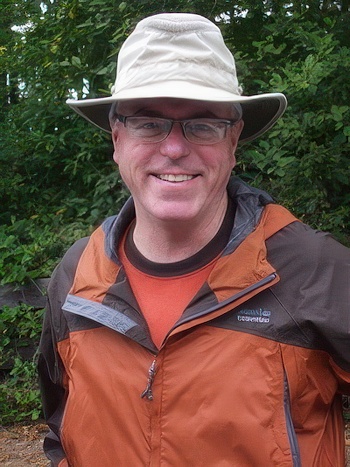
I returned to Shoreline Community College and then to Central Washington University and completed my Bachelor’s Degree in Accounting.
I worked for several Seattle area accounting firms and after a year I accepted an accounting position with the State of Washington Department of Licensing as a real-estate auditor. I have since transferred to another division and accepted a fraud investigator position that I enjoy immensely.
I am always amazed at the level of compliance I receive from the businesses staff when I take out a pad of lined paper, two sharpened No.2 pencils, and my ‘TI-83 Plus.’
What military associations are you a member of, if any? What specific benefits do you derive from your memberships?
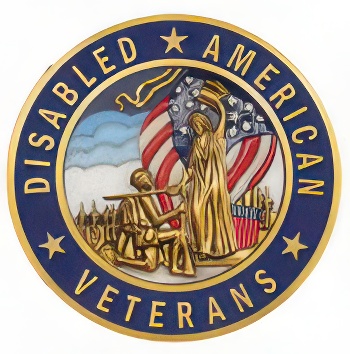
I am a member of the Disabled American Veterans organization.
In what ways has serving in the military influenced the way you have approached your life and your career?
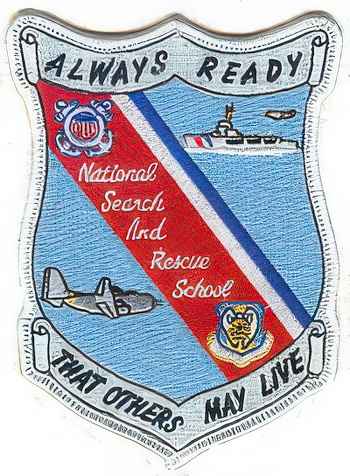
I grew up in the military as my father was a SMSgt in the US Air Force, During the Korean War, he was a US Army Medic (Corporal) attached to the Raider Platoon of the 23rd Infantry Regiment, 2nd Infantry Division. When I was growing up I would ask him about his war service, he would not elaborate about it, but would weave his experiences into our discussions about life. The influence he instilled in me was duty, honor, professionalism, caring for others, and overall that personal responsibility was the paramount guide to success.
When I entered the US Coast Guard his influence and woven experiences of life were with me every day. Life within the social structure of the military service I entered further defined me and was exhilarating though at times mentally exhausting. The greater part of my career was assigned to ships from WLB’s to WPB’s – the hours were long, sleep was irregular, but the personal rewards of maintaining aids to navigation, an unheralded job, contributed to the economic safety of our nation and to that of our trading partners.
Law enforcement at sea protected our national natural resources, interdicted both the illegal smuggling of controlled substances and worked to stop human trafficking and arrest the offenders. The prosecution of Search and Rescue cases were the most rewarding as each called upon me as a USCG QM to fulfill the US Coast Guard’s over-arching motto of duty, honor, professionalism, and caring for others to guide the successful rescue of those in distress.
The one SAR case where I the Group SAR Controller was not successful continues to live within me. Every day, it holds me to reviewing my duty, honor, professionalism, personal responsibility and caring for others as the paramount guide to get through my day.
Based on your own experiences, what advice would you give to those who have recently joined the Coast Guard?
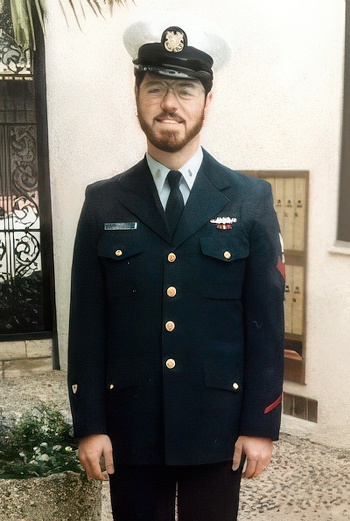
Learn the job, live the job, apply your knowledge, skills, and abilities and understand that being in the Coast Guard requires you to make life and death decisions – for you, your shipmates, and the those that need you to act in order to save their life and the lives of others. In this job – indecision costs live. Understand that suddenly – you will have to take charge – your knowledge, skills, and abilities must instinctively move you to the forefront. If you cannot accept this reality – it is time for you to leave.
In what ways has togetherweserved.com helped you remember your military service and the friends you served with.

I have been able to recall my service years in a more positive light.
PRESERVE YOUR OWN SERVICE MEMORIES!
Boot Camp, Units, Combat Operations
Join Togetherweserved.com to Create a Legacy of Your Service
U.S. Marine Corps, U.S. Navy, U.S. Air Force, U.S. Army, U.S. Coast Guard
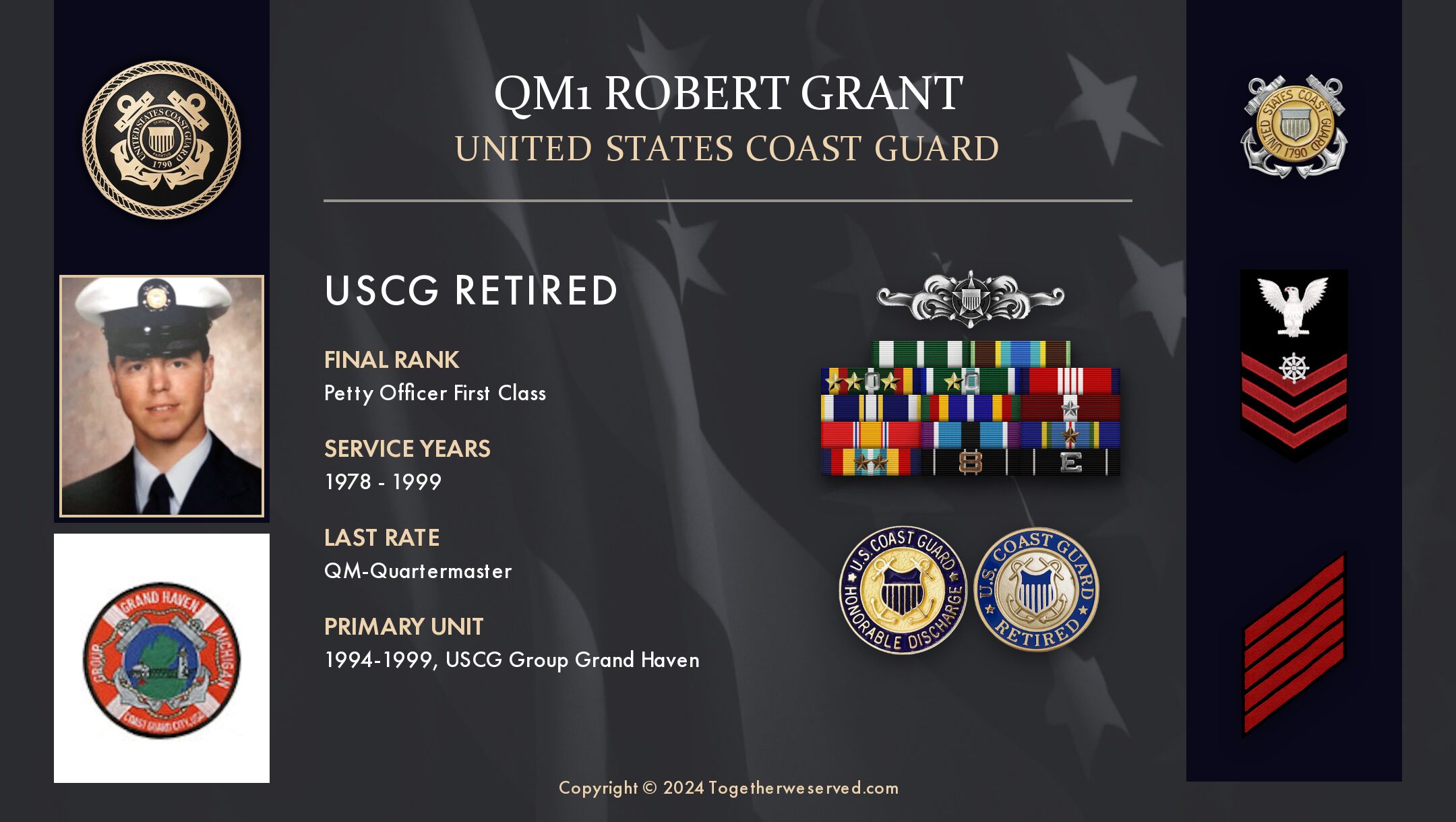
0 Comments